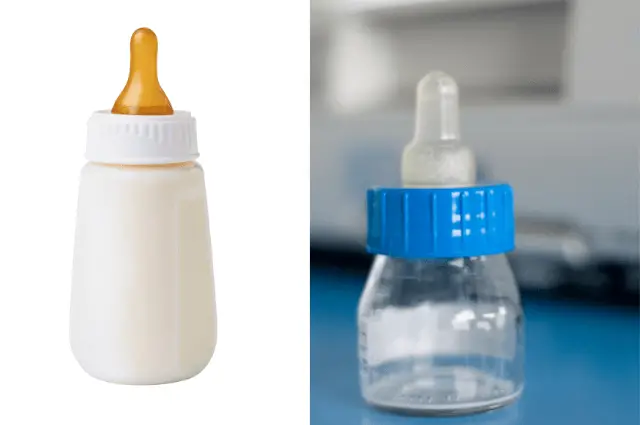Are you searching for signs that show a baby needs faster flow teat? Feeding is sometimes difficult for some babies. This situation is usually temporary. The first thing to do is observe your baby and find out their temperament when eating. This would go a long way in helping you know when your baby’s teat needs to be changed.
Hey! By the way… any links on this page that lead to products on Amazon are affiliate links and I earn a commission if you make a purchase. Thanks in advance – I really appreciate it! .
Bottle-feeding your baby could be challenging, especially when you have to figure out which teat type and size would suit your baby or decide when it is time to move up to the next teat level.
This article has been put together to guide mothers and also assist them in understanding the different types of teats and their flow rates so that your baby’s unique feeding needs can be catered for.
Signs Teat is too Slow for Baby
Baby sucking is not always very effective at first, especially in babies born a few weeks prematurely. At the very beginning, your baby will need a slow flow teat. But as time goes on, as they get older, everything normalizes. This is because babies become more skillful hence making them suck harder and faster.
However, most mothers often face the challenge of not knowing the right time to change their baby’s teat. The following are signs that indicate the teat is too slow for the baby or signs that shows a baby needs a faster flow teat.
- Becoming impatient or aggravated when eating
- Baby sleeps off often while eating
- The teat crashes into itself when sucking
Becoming impatient or aggravated when eating
When you notice your baby is always struggling so hard to suck to the extent, they run out of breath and get tired of nursing. Some may even swallow air and choke; then, you should consider changing the teat to a faster-flowing teat.
Baby sleeps off often while eating
In a situation where the baby continues to drink slowly, spending more time than expected for an average amount of milk, he sleeps off often while eating. This suggests that the flow of the teat may be too slow. Despite his efforts to satisfy his appetite, it will take too long for him to finish his milk.
The teat crashes into itself when sucking
Your baby’s bottle teat is too slow if it crashes into itself when your baby sucks. During pauses, you will then hear noise when the pacifier regains its shape. This is a sign that it’s time to change teat to a fast flow teat.
Signs Teat Flow is too Fast
The fast flow of milk from the teat is an indication that the teat is too big, and in most cases, babies find it difficult to handle such teats. The following are signs that the Teat flow is too fast for your Baby:
- Gulping or hard swallowing:
- Choking:
- Excess milk dripping out of the mouth:
- Coughing and refusal to eat:
Gulping or hard swallowing:
When a child swallows his meal too fast compared to his usual way of swallowing, this indicates that the teat is too large.
Choking:
When a teat is too big, the milk flow could be so fast, making the baby have so much milk in his mouth. This usually makes the baby choke (he swallows loudly, coughs, and spits out some milk)
Excess milk dripping out of the mouth
Big teats make excess milk flow into the baby’s mouth. To prevent choking, the baby spits out the milk.
Other signs you may notice are coughing and refusal to eat.
When you notice any of the signs listed above, it is advised you change the nipple to a medium flow teat.
Teat Size for a Reflux Baby
Reflux is the phenomenon of food rising from the stomach of the baby. Sometimes this is manifested by regurgitation, but it can also happen that food remains in the baby’s throat. This is then referred to as “silent” reflux. Both types of reflux can occur in the same baby.
Some babies get rid of their reflux problems quickly, but for others, it can last until they are 18 months old. It is therefore essential to use the right bottle and teats to avoid pain from the start! The type of bottle you use can be a significant factor in causing (or reducing) reflux in your baby.
Some bottles create too much air in breast milk or formula as it passes through the nipple. This fills the belly too quickly and also makes digestion uncomfortable as air moves through the digestive system.
Mothers can help relieve their baby’s reflux without medication by using suitable bottles and teats. The best bottles for reflux are airless bottles. They are specially designed to reduce the amount of air that gets into the formula or breast milk (the leading cause of reflux in infants).
These bottles mimic breastfeeding and almost wholly prevent air from passing through the nipple.
Using the right bottle with the wrong teat will not stop reflux.
Anti-reflux teats help to prevent reflux. They have the following characteristics:
- There’s movement and flexibility of teat when compared to the mother’s breast.
- Aeration is facilitated with an anti-reflux valve
- The teat enables the passage of breastfeeding bottles.
With all these, a baby is less inclined to swallow air while feeding.
For babies who will be fed with anti-reflux formula, a single hole, fast flow Is ideal.
Can a Fast Flow Teat Cause Wind?
If a baby is feeding with a too slow teat, they may suck so vigorously and suck in more air than normal. If the teat is too fast, the baby may struggle to drink the milk quick enough and gulp down the air in the process.
Hence for a windy baby, ensure such baby is using an appropriate teat. the ideal teat for a windy baby is the size two teat
Can the wrong size teat cause wind?
Using an incorrect teat size while feeding can result in the wind or an excessive intake of air. The baby may suck vigorously and ingest more air than usual in an attempt to receive enough milk if the teat is moving too slowly. On the other side, if the teat is moving too quickly, the baby may find it difficult to get the milk down quickly and may wind up gulping air as a result. Both circumstances might cause the baby’s digestive tract to become irritated and produce more gas, which can result in wind or frequent burping.
When to move up teat size?
The baby’s age and feeding abilities often determine when to move up to a larger teat size. Due to their inexperience with sucking, newborns typically start with a slow-flow teat (size 1). There are indications that it might be appropriate to switch to a larger teat size as your baby grows and becomes more proficient at sucking. It’s important to pay attention to your baby’s feeding habits and behavior to see if they are having trouble using the current teat size and might benefit from a faster flow teat (size 2 or 3).
Conclusion
Above are the signs baby needs faster flow teat. Babies usually start on a slow teat, but they move to a faster teat as time goes on. However, the question that bothers the mother is, ‘when do I know my baby is not comfortable with the teat he is using?’
Here is a guide to help you choose
Size 1: (Slow flow) this is ideal for infants one month and older
Size 2: (Medium) this is for infants three months and over.
Size 3: (Fast flow) this is for older babies and those babies taking thickened formula.


